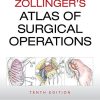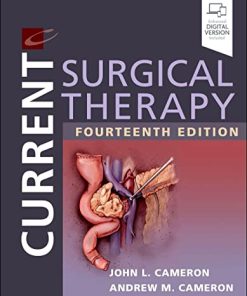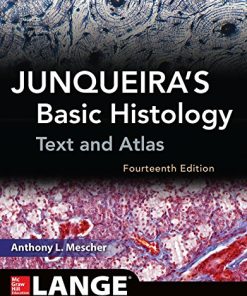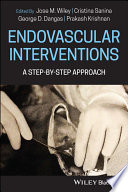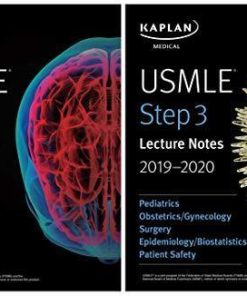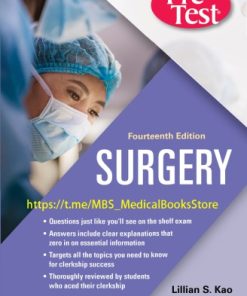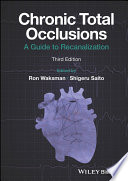Ellis and Calne’s Lecture Notes in General Surgery 14th Edition by Christopher Watson, Justin Davies 1119862512 9781119862512
$50.00 Original price was: $50.00.$25.00Current price is: $25.00.
Ellis and Calne’s Lecture Notes in General Surgery 14th Edition by Christopher Watson, Justin Davies – Ebook PDF Instant Download/DeliveryISBN: 1119862512 9781119862512
Full download Ellis and Calne’s Lecture Notes in General Surgery 14th Edition after payment.
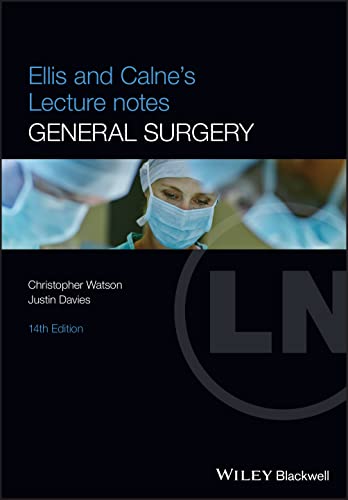
Product details:
ISBN-10 : 1119862512
ISBN-13 : 9781119862512
Author: Christopher Watson, Justin Davies
Ellis and Calne’s Lecture Notes in General Surgery is a comprehensive guide that focuses on the fundamentals of general surgery while systematically covering all the clinical surgical problems that a student or doctor in training may encounter and about which they need to know.
The text includes principles of treatment that have been written at a level to inform the medical student and doctor in training. The text features color illustrations throughout and includes electronic access to a wide range of extra material including case studies, radiological and clinical images, and biographies.
Ellis and Calne’s Lecture Notes in General Surgery 14th Table of contents:
1 Surgical strategy
History and examination
2 Human factors in surgery
What are human factors?
Error in healthcare
What are the different types of error and failure?
What human factors in surgery should we be thinking about?
3 Fluid and nutrition management
Body fluid compartments
Fluid and electrolyte losses
Normal fluid losses
4 Preoperative assessment
Patient assessment
Management of pre‐existing medical conditions
Operative factors influencing preoperative management
5 Postoperative complications
Classification
Surgical site infection (SSI)
Complications of antibiotic therapy
Venous thromboembolism
Management of the unwell postoperative patient
Postoperative haemorrhage
Postoperative fever
Postoperative respiratory problems
Pulmonary collapse and infection
Postoperative ileus
Abdominal wound dehiscence
Anastomotic leak
Postoperative fistula
Localized intraperitoneal collections
Subphrenic abscess
Pelvic abscess
Delirium
Complications of minimally invasive surgery
Additional resources
6 Acute infections
Cellulitis
Erysipelas
Abscess
Boil
Carbuncle
Specific infections
Necrotizing soft tissue infections
Anthrax
Botulism
Actinomycosis
Additional resources
7 Tumours
Pathology
Clinical features and diagnosis
History
Examination
Special investigations
Tumour markers
Treatment
Anti‐neoplastic agents
Cancer screening
Inherited cancer syndromes
8 Shock
Aetiology
Normal regulation of tissue perfusion
Abnormal regulation of tissue perfusion
Special causes of shock
Sequelae of shock
Principles in the management of patients in shock
Prevention of hypothermia
9 Trauma surgery
Trauma types
The triad of death in trauma
Phase 1: Pre‐hospital trauma care and initial assessment
Phase 2: Initial assessment with ongoing resuscitation
Secondary survey
Damage control ethos
10 Burns
Causes
Severity
The initial management of the severe burn injury patient
Complications
Prognosis
Additional resources
11 The skin and its adnexae
General functions of the skin
Skin anatomy and embryology
Epidermoid cyst
Dermoid cyst
Verruca vulgaris (wart)
Plantar warts
Ganglion
Pilonidal sinus
Hidradenitis suppurativa
Conditions affecting the nails
Tumours of the skin and subcutaneous tissues
Pigmented skin lesions and malignant melanoma
Tumours of sweat glands and sebaceous glands
Adnexal‐derived skin cancers
Vascular anomalies
Lymph vessel tumours
Nerve tumours
Fatty tumours
Additional resources
12 Arterial disease
Arterial trauma
Aneurysm
Abdominal aortic aneurysm
Ruptured abdominal aortic aneurysm
Popliteal aneurysm
Assessing the patient with arterial disease
Lower limb peripheral arterial disease
Acute limb ischaemia (Box 12.3)
Embolism
Atherosclerotic occlusive arterial disease
Coronary occlusive disease
Mesenteric occlusive disease
Carotid artery disease (Figure 12.6)
Raynaud’s disease and Raynaud’s phenomenon9
Buerger’s disease
Cold injury
Additional resources
13 The heart and thoracic aorta
Introduction
Cardiopulmonary bypass
Cardiac intensive care
Valvular disease
Aortic stenosis
Mitral regurgitation
Mitral stenosis
Ischaemic heart disease
Thoracic aortic disease
14 The chest and lungs
Injury to the chest
Sternal fracture
Fractures of the ribs
Complications
Empyema
Lung tumours
Carcinoid tumours
Lung cancer
Secondary tumours
Additional resources
15 Venous disorders of the lower limb
Normal venous function
Anatomy of the venous drainage of the lower limb
Aetiology of venous disease
Clinical presentation
Assessment of the patient with venous disease
Treatment of venous disease
Deep vein thrombosis
Additional resources
16 The brain and meninges
Space‐occupying intracranial lesions
Intracranial tumours
Intracranial abscess
Intracranial vascular lesions
Hydrocephalus
Additional resources
17 Head injury
Types of injury
Brain injuries
Cerebral perfusion
Management of the patient with a head injury
Indications for surgery in head injuries
Traumatic intracranial bleeding
Other complications
Brain death
Additional resources
18 The spine
Spina bifida (Figure 18.1)
Spinal injuries
Age‐related (degenerative) spinal disorders
Cervical spondylosis
Spinal infection
Spinal tumours
Additional resources
19 Peripheral nerve injuries
Classification
Special investigations
Brachial plexus injuries
Radial nerve injuries (Figure 19.1a)
Median nerve injuries (Figure 19.1b)
Median nerve compression at the wrist (carpal tunnel syndrome)
Ulnar nerve injuries (Figure 19.2)
Ulnar nerve compression at the elbow (cubital tunnel syndrome)
Differential diagnosis of flexion deformities of the fingers
Sciatic nerve injuries
Common peroneal nerve injuries
Lateral cutaneous nerve of the thigh compression: meralgia paraesthetica
Cervical sympathetic nerve injuries: Horner’s syndrome8
Additional resources
20 The oral cavity
The oral cavity
Embryology
Congenital disease of the oral cavity and lips
Acquired disease of the oral cavity and lips
Non‐malignant disease of oral mucosa and oral cavity
Lesions of the oral mucosa including lip mucosa
Potential malignant disorders of the mouth
Intraoral pigmented lesions
Intraoral lumps
Malignant disease of the cutaneous lip
Malignant disease of oral mucosa and oral cavity
Reconstructive surgery in head and neck cancer
Additional resources
21 The salivary glands
Inflammation
Viral infections
Acute bacterial parotitis
Chronic recurrent parotid sialadenitis
Sjögren’s syndrome
Calculi
Salivary tumours
Adenolymphoma
Carcinoma
Additional resources
22 The oesophagus
Dysphagia
Perforations of the oesophagus
Caustic stricture of the oesophagus
Achalasia of the cardia
Plummer–Vinson syndrome6
Oesophageal diverticula
Pharyngeal pouch
Reflux oesophagitis
Tumours of the oesophagus
Carcinoma
Barrett’s oesophagus10 and adenocarcinoma
Additional resources
23 The stomach and duodenum
Congenital hypertrophic pyloric stenosis
Duodenal atresia
Peptic ulcer
The acute peptic ulcer
The chronic peptic ulcer
Perforated peptic ulcer
Pyloric stenosis
Gastrointestinal haemorrhage
Bleeding peptic ulcer
Gastroparesis
Gastric volvulus
Gastric tumours
Gastric polyps
Gastrointestinal stromal tumours
Gastric lymphoma
Gastroenteropancreatic neuroendocrine tumours (GEP‐NETs)
Gastric carcinoma
Additional resources
24 The surgery of obesity
Obesity
25 The small intestine
Meckel’s diverticulum
Crohn’s disease
Tumours of the small intestine
Neuroendocrine tumours
Additional resources
26 The appendix
Embryology and anatomy
Acute appendicitis
Clinical features
Appendiceal abscess
Appendix mass (Box 26.2)
Appendiceal neoplasms
Additional resources
27 The colon
Constipation and diarrhoea
Diverticular disease
Angiodysplasia
Colitis
Tumours
Colostomy
Additional resources
28 The rectum and anal canal
Bright red rectal bleeding ( Table 28.1)
Haemorrhoids
Anal fissure
Anorectal abscesses
Anal fistula
Stricture of the anal canal
Prolapse of the rectum
Pruritus ani
Faecal incontinence
Tumours
Rectal polyps
Carcinoma of the rectum
Anal cancer
Additional resources
29 The acute abdomen
Aetiology
Clinical assessment
Special investigations
Principles of treatment
Non‐surgical treatment
Surgery
Peritonitis
Special causes of peritonitis
Mesenteric ischaemia
30 Intestinal obstruction and paralytic ileus
Mechanical obstruction
Closed loop obstruction
Adhesive obstruction
Volvulus
Neonatal intestinal obstruction
Distal intestinal obstruction syndrome
Intussusception
Paralytic ileus
Pseudo‐obstruction
Additional resources
31 Hernia
Definition
Abdominal wall hernias
Inguinal hernia
Anatomy (Figure 31.2)
Femoral hernia
Richter’s hernia
Umbilical hernia
Congenital umbilical hernia
Paraumbilical hernia
Divarication of the recti
Epigastric hernia
Incisional hernia
Differential diagnosis of midline hernia
Unusual hernias
Diaphragmatic hernias
Traumatic diaphragmatic hernias
Acquired hiatal hernias
Reflux oesophagitis
Additional resources
32 The liver
Liver enlargement
Jaundice
Congenital abnormalities
Liver trauma
Acute infections of the liver
Hydatid disease of the liver
Cirrhosis
The effects of liver failure
Hepatorenal syndrome
Liver neoplasms
Cholangiocarcinoma
Liver surgery
Additional resources
33 The gallbladder and bile ducts
Congenital anomalies
Cholelithiasis (gallstones)
Bile composition and function
Gallbladder physiology
Gallstone types
Clinical manifestations of gallstones
Gallbladder polyps
Carcinoma of the gallbladder
Cholangiocarcinoma
Additional resources
34 The pancreas
Congenital anomalies
Annular pancreas
Heterotopic pancreas
Acute pancreatitis
Severe acute pancreatitis
Chronic pancreatitis
Pancreatic cysts
Pancreatic tumours
Pancreatic neuroendocrine tumours
Insulinoma ( β‐cell tumour)
Gastrinoma (Zollinger–Ellison syndrome,11non‐β‐cell islet tumour)
Pancreatic carcinoma
Additional resources
35 The spleen
Splenomegaly
Splenectomy
Ruptured spleen
Additional resources
36 The lymph nodes and lymphatics
The lymphadenopathies
Lymphoedema
Additional resources
37 The breast
Developmental anomalies
Symptoms of breast disease
Traumatic fat necrosis
Acute inflammation of the breast (mastitis)
Chronic inflammatory conditions of the breast
Benign breast disease
Gynaecomastia
Phyllodes tumour
Carcinoma of the breast
Paget’s disease of the nipple
Inflammatory breast cancer
Patients unfit for surgery
Metastatic disease
Carcinoma of the male breast
Breast screening
Additional resources
38 The neck
Branchial cyst and sinus
Tuberculous cervical adenitis
Carotid body tumour (chemodectoma)
Additional resources
39 The thyroid
Congenital anomalies
Lingual thyroid
Thyroglossal cyst
Thyroid physiology
Pathology of goitre
Clinical features in thyroid disease
Hyperthyroidism
Hypothyroidism
Hashimoto’s disease
Riedel’s thyroiditis
De Quervain’s thyroiditis
Investigations in thyroid disease
Clinical classification of thyroid swellings
Outline of treatment of goitre
Hyperthyroidism
Complications of thyroidectomy
Thyroid tumours
Additional resources
40 The parathyroids
Anatomy and development
Physiology
Effects of increased PTH production
Hypoparathyroidism
Hyperparathyroidism
Additional resources
41 The thymus
Tumours
Myasthenia gravis
42 The adrenal glands
Physiology
Enzyme disorders
Cushing’s syndrome
Primary hyperaldosteronism (Conn’s syndrome)
The adrenogenital syndromes (Figure 42.1)
Non‐functioning tumours of the adrenal cortex
Adrenocortical carcinoma
Adrenomedullary tumours
Ganglioneuroma
Adrenal ‘incidentaloma’
Hypertension
Renovascular hypertension
Additional resources
43 The kidney and ureter
Congenital anomalies
Common renal anomalies (Figure 43.2)
Horseshoe kidney
Duplex system
Polycystic disease
Renal cysts
Haematuria
Injury to the kidney
Hydronephrosis
Urinary tract calculi
Urinary tract infections
Reflux nephropathy
Pyonephrosis
Renal abscess
Renal tuberculosis
Renal failure
Management
Acute tubular necrosis
Chronic renal failure
Renal tumours
Nephroblastoma (Wilms’ tumour5)
Renal cell carcinoma
Tumours of the renal pelvis and ureter
Additional resources
44 The bladder
Congenital anomalies
Urachal anomalies
Bladder exstrophy (ectopia vesicae)
Rupture of the bladder
Diverticulum of the bladder
Bladder stone
Bladder tumours
Urothelial carcinoma
Additional resources
45 The prostate
Benign prostatic enlargement
Urinary retention
Bladder neck obstruction
Prostatitis
Prostate cancer
Additional resources
46 The male urethra
Anatomy
Congenital anomalies
Urethral injury and trauma in the male
Urethral stricture
47 The penis
Phimosis
Paraphimosis
Balanitis
Penile cancer
Erectile dysfunction
Additional resources
48 The testis and scrotum
Abnormalities of testicular descent
Scrotal swelling
Epididymal cysts
Hydrocoele
Acute infections of the testis and epididymis
Chronic infections of the testis
Torsion of the testis
Varicocoele
Disorders of the scrotal skin
Tumours of the testis
Male infertility
Additional resources
49 Transplantation surgery
Historical background
Classification of grafts
Organ donors
Exclusions to organ donation
Organ preservation
Organ recipients
The immunology of organ transplantation
Organ matching
Rejection
Principles of immunosuppressive therapy
Complications of transplantation
Results of clinical organ transplantation
Additional resources
People also search for Ellis and Calne’s Lecture Notes in General Surgery 14th:
ellis and lewis clinton nc
ellis and young model of lexical processing
ellis and esler world history pdf
donnelly and lee library
ellis and nick
Tags: Ellis, Calne, Lecture Notes, General Surgery, Christopher Watson, Justin Davies
You may also like…
History & Research
Business & Economics - Professional Finance
Uncategorized
Uncategorized
Uncategorized
Business & Economics - Human Resources
(EBook PDF) Compensation 14th Edition by Barry Gerhart 1264415214 9781264415212 full chapters
Uncategorized



